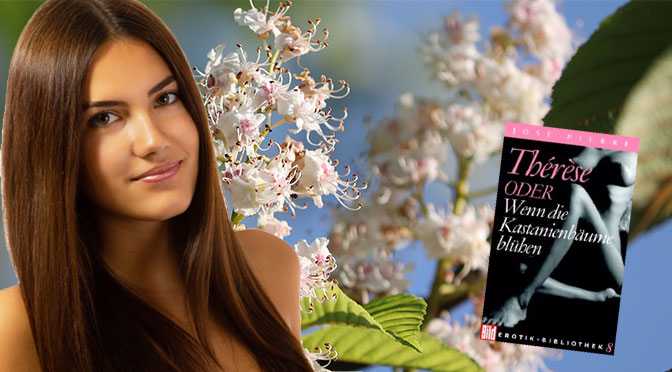When it comes to erotic literature, many readers first think of well-known books like “Fifty Shades of Grey” or “Lady Chatterley’s Lover”. However, there are also lesser-known but still significant works in this genre. One of these classics, which to my knowledge has never been translated into English, is “Thérèse” by José Pierre. In this blog post, we will discuss the history of the novel’s creation, author, content, and impact. We will also discuss what reading erotic literature can give writers.
José Pierre was a French author who originally belonged to the group of surrealists around André Breton. As such, he also served as the editor of the Surrealists’ transcripts of conversations about sexuality, which were published under the name “Investigating sex: surrealist research, 1928-1932” At that time, Breton, Louis Aragon, Paul Eluard, Man Ray, Max Ernst, Yves Tanguy, and Jacques Prevert discussed their attitudes toward sexuality in a kind of “jeu de la vérité.”
While José Pierre initially wrote mainly nonfiction about various art movements, he specialized in erotic literature in the years that followed. Of his numerous erotic novels, “Thérèse”, published in 1974, is the best known.
In the Paris of the permissive sixties, sixteen-year-old high school student Francis succumbs to the charms of his older brother’s fiancée. Thérèse introduces them both to the art of love and becomes the erotic center of a group of young people from good homes. They know no material worries and no taboos.
The book was very controversial at the time of its publication and was considered by many to be too explicit and offensive. “Thérèse” became a bestseller and has since delighted numerous readers across generations. Many critics praised the book for its unusual narrative style and the psychological portrait of its characters.
For writers, reading erotic literature can be very helpful. By studying works like “Thérèse”, authors can improve their own writing. They can see how other authors incorporate eroticism and sexual tension into their stories and how they deal with the characters’ psyches. In this way, they can improve their own work and develop a deeper understanding of their craft.
Overall, “Thérèse” is a major classic of erotic literature that continues to delight readers today. Through its depiction of love, jealousy, and human passion, the book has a universal and timeless quality that makes it appealing to readers around the world. Authors may also benefit from reading Therese, or When the Chestnut Trees Bloom, as it can help them improve their own writing skills and take their stories to a deeper and more emotional level.
About José Pierre’s “Thérèse, or When the Chestnut Trees Bloom
When it comes to erotic literature, many readers first think of well-known books like Fifty Shades of Grey or Lady Chatterley’s Lover. However, there are also lesser known but still significant works in this genre. One of these classics, which to my knowledge has never been translated into English, is Thérèse or When the Chestnut Trees Bloom by Jose Pierre. In this blog post, we will discuss the history of the novel’s creation, author, content, and impact. We will also discuss what reading erotic literature can give writers.
José Pierre was a French author who originally belonged to the group of surrealists around André Breton. As such, he also served as the editor of the Surrealists’ transcripts of conversations about sexuality, which he published under the name “Recherches in the Realm of the Senses.” At that time, Breton, Louis Aragon, Paul Eluard, Man Ray, Max Ernst, Yves Tanguy, and Jacques Prevert discussed their attitudes toward sexuality in a kind of “jeu de la vérité.”
While José Pierre initially wrote mainly nonfiction about various art movements, he specialized in erotic literature in the years that followed. Of his numerous erotic novels, “Thérèse or When the Chestnut Trees Bloom,” published in 1974, is the best known.
In the Paris of the permissive sixties, sixteen-year-old high school student Francis succumbs to the charms of his older brother’s fiancée. Thérèse introduces them both to the art of love and becomes the erotic center of a group of young people from good homes. They know no material worries and no taboos.
The book was very controversial at the time of its publication and was considered by many to be too explicit and offensive. “Thérèse, or When the Chestnut Trees Bloom” became a bestseller and has since delighted numerous readers across generations. Many critics praised the book for its unusual narrative style and the psychological portrait of its characters.
For writers, reading erotic literature can be very helpful. By studying works like “Thérèse, or When the Chestnut Trees Bloom,” authors can improve their own writing. They can see how other authors incorporate eroticism and sexual tension into their stories and how they deal with the characters’ psyches. In this way, they can improve their own work and develop a deeper understanding of their craft.
Overall, “Therese, or When the Chestnut Trees Bloom” is a major classic of erotic literature that continues to delight readers today. Through its depiction of love, jealousy, and human passion, the book has a universal and timeless quality that makes it appealing to readers around the world. Authors may also benefit from reading Therese, or When the Chestnut Trees Bloom, as it can help them improve their own writing skills and take their stories to a deeper and more emotional level.


